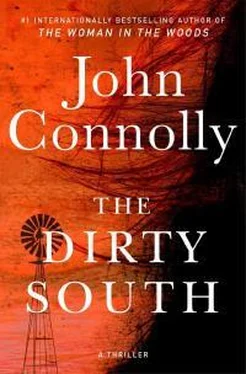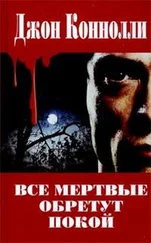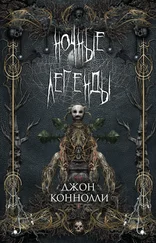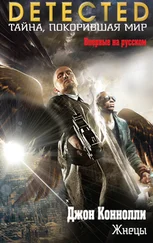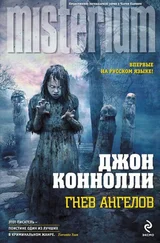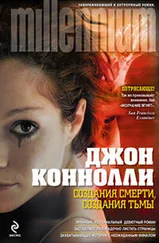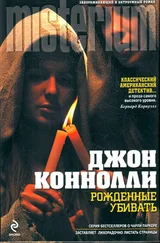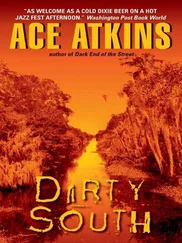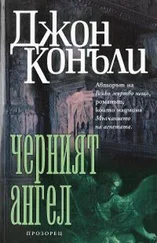64
Parker drove alone to Hamill, taking some of the back roads to familiarize himself with the land, the browns of branch and earth broken only by new-growth pines. He passed countless iterations of houses of worship – some little more than cabins, others so grandiose that it seemed impossible for them to have any relevance to those who passed through their doors, unless it was to remind them of the distance of their daily lives from the glory of God. Pools of water stood amid the trees where fields had flooded from the recent rains, and here and there lay patches of flattened forest, and the roofless shells of houses, marking where tornadoes had struck. One Pentecostal church had vanished almost entirely, leaving only a sign advertising its former presence and a battered cross that someone had lodged in the earth amid the wreckage. Parker wondered what message the congregation had taken from its destruction. Whatever God was trying to tell them, it wasn’t good.
All the businesses he saw were small – bait shops, rock shops, auto shops, storage depots, liquor stores, flea markets – and few gave the impression of flourishing, except perhaps the auto shops and liquor stores. As Parker neared the town limits the latter’s number increased. The two adjacent counties were dry, with sales of alcohol banned entirely, which meant that Burdon reaped the benefits.
He arrived at the sheriff’s office, where a deputy showed him into a small conference room. Two file storage boxes stood on the table. Parker was asked if he needed coffee, or anything else, but replied that he was fine. He removed his coat, hung it on the back of a chair, and opened the first of the boxes, the one relating to Patricia Hartley’s death. It contained only a single slim folder. Inside was a photostat copy of the original report detailing the discovery of the body, signed by Jurel Cade, and a series of photographs of the scene, taken after Hartley’s remains had been removed, all of them replicating pictures already in Parker’s possession. The additional photos received by Parker, and not contained in the sheriff’s file, had been taken with an instant camera. Parker knew that forensic examiners generally preferred not to use instant cameras because the pictures faded over time, but the results could be useful as aide-mémoires or backups in the event of some disaster with the original records. In this case, any other photographs taken at the scene had been destroyed in the car wash incident, but the instant snaps, as Parker informed Griffin, had eventually found their way to him.
He set aside the photos and moved on to a rough sketch of the area in which the body had been located, with north indicated at the top, and distances carefully and, he thought, accurately delineated, almost certainly to remove any doubt that Hartley had been discovered on county land, not federal. The paper on which the sketch was drawn had suffered water damage at the edges and was stained brown. Finally, there was a copy of the coroner’s report, in which Loyd Holt had recorded a verdict of accidental death.
And that was it: no notes on a search of the scene; no pictures of the body; no account of the discovery of evidence of any kind; no details of the collection and packaging of said evidence, or of control samples; no chain of custody; no witness statements; no interviews; and most of all, no investigation.
Parker made some cursory notes and drew a version of the map, including the distances, but there was little that he didn’t already know. He restored the file to its container, put it aside, and went to work on the second box, the one relating to Estella Jackson’s murder in the summer of 1992. Here he had better luck. Eddy Rauls, assisted by the previous coroner, and Vester Stanley, at that time the forensic examiner, had worked the scene carefully, conducted systematic grid searches for evidence, and kept copious notes.
Unlike Patricia Hartley and Donna Lee Kernigan, Jackson’s body had not been discovered in the open, but in a woodshed adjoining a run-down property about five miles outside Hamill. She had been reported missing six days earlier, but she came from a troubled background and had a history of running away from home, sometimes staying with friends or relatives for days, even weeks, until her domestic situation grew calmer. Typically, though, either Estella or someone else would get in touch to let the family know she was okay. When, on this particular occasion, no word was heard, a sister contacted the county sheriff, which meant that by the time Estella’s body was found, she had been missing for nine days. She was located by a party of local men, one of a number of teams assembled by the sheriff to conduct searches of the area. Among them were an uncle and two cousins of the victim. Her father – a dissolute man, and the cause of much of his daughter’s misery, according to some of the statements included in the file – was looking elsewhere at the time. Estella Jackson’s mother, perhaps thankfully, had predeceased her daughter by two years.
The autopsy concluded that Jackson had probably been dead for a week, meaning she was killed on the second or third day after her disappearance. She had been badly beaten, and the branch lodged in her mouth had been put there before she died, possibly in an effort to silence her. The branch between her legs was inserted postmortem, but the medical examiner was of the opinion that she had probably been raped before she died.
Parker worked his way through the photographs from the scene. Again, he was familiar with some of them, and the rest didn’t do much beyond making him feel depressed. He moved on to the witness statements, and the interviews conducted in the days that followed, most of them by Rauls. They were, Parker thought, more perfunctory than the paperwork from the scene, most amounting to barely a paragraph or two. That in itself wasn’t unusual: not every interview carried out in the course of an investigation would prove productive, and the majority involved checking boxes, eliminating suspects, or closing down avenues of inquiry that might otherwise prove wasteful of resources. Only the interviews with Jackson’s father extended to multiple pages. From their tone, it was clear that Rauls liked him for the killing, but had no evidence, and no confession, so any suspicions remained just that. No additional paperwork had since been filed.
The door opened behind Parker, and Jurel Cade entered.
‘You find our murderer yet?’ he asked.
Parker didn’t reply, but continued noting the names and addresses on the statements accumulated by Rauls during the Jackson investigation. Cade took a seat and leafed through the Jackson photos.
‘You planning on talking to all those people?’ said Cade, once Parker had finished writing.
‘Some of them.’
‘Good luck with that. They didn’t have a whole lot to offer first time round, and at least three of them are dead by now.’
Parker thought that Cade’s familiarity with their contents must mean he’d looked at the Jackson files recently.
‘Did you return to the Jackson case after Patricia Hartley was found?’ said Parker.
‘Out of curiosity.’
‘And it didn’t inspire you to investigate further?’
‘I saw no reason to disagree with the coroner’s recommendation.’
There was no point in raking over those old coals, Parker knew. It would get him nowhere. Jurel Cade’s decision had been made as soon as he nudged Patricia Hartley’s body over the edge of a hill and watched it tumble down the slope. Everything that followed – including the probable destruction of evidence in a car wash, and the relocation of the Hartley family – was a consequence of that act.
‘Why didn’t Eddy Rauls call in the state police to help investigate the Jackson murder?’ said Parker.
Читать дальше
